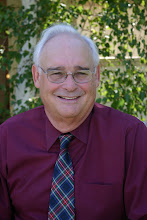Boat that washed ashore blocks St. Bernard Parish street.
The response had to come from across the country and in some cases from outside the United States.
Likely we all have vivid memories of the television news reports showing first responders risking their lives as they plucked stranded people from the rooftops of their homes in flooded New Orleans neighborhoods.
A less dramatic, but important response involved teams of safety professionals and damage assessment experts, who were dispatched to New Orleans, where levies had collapsed. These teams were also sent to the Louisiana, Mississippi and Alabama coast, where Katrina ground away thousands of homes, beach front businesses and historic landmarks. Entire communities were either blown or washed away.
Bakersfield architect William Melby and Chris Lee, who now serves as the City of Bakersfield’s assistant building director, were members of specially trained, volunteer teams sent to the devastated St. Bernard Parish, southeast of New Orleans. Lee worked for the City of Anaheim at the time.
Melby recalls that he volunteered for California’s Office of Emergency Safety Assessment Program thinking he would be responding to earthquakes, floods and fires in California. It was a civic commitment he made believing if he helped a suffering community, a helpful hand would be extended to Bakersfield in an emergency.
Melby admits it came as a surprise when he and other California volunteers – architects, engineers and building officials – were dispatched across the country to claw their way through the rubble of Katrina.
Their base of operations was a tent city surrounded by debris and damaged buildings. Their job was to assess the structural integrity of every building. A green tag meant the building was safe, although it might be damaged. Red tag indicated a building was unsafe and posed a threat to life. A yellow tag indicated some risk, with limited use allowed.
Every day from 6 a.m. to 6 p.m., teams fanned out into neighborhoods to inspect buildings. The tags they hung determined if a family could return home. They alerted residents and emergency responders to hidden dangers that existed in the abandon structures.
Initially their work was hindered by the lack of maps, supplies and direction. A St. Bernard Parish building official who greeted them when they arrived, was never seen again. It was the National Guard that pulled together the effort.
After volunteers were inoculated to safeguard them from the health hazards they would encounter, they formed small teams and set about the tedious task of “triaging” damaged buildings. These were long, hot, humid days of wading through mud and devastation.
Melby described surreal scenes of cars and boats that had landed on rooftops. He encountered remnants of personal loss – homes littered with toys, wedding photographs, dolls, scrapbooks, clothing and furniture.
The volunteers tried to shut out the painful scenes. They focused on the buildings. But it wasn’t that easy. Lee recalled team members held themselves together during their 16-day inspection assignments, but on the way home, when the pressure was off, some began to cry.
Both Melby and Lee have responded to other disasters, sharing their professional skills and compassion to help communities recover. But as these communities have benefited, so has Bakersfield. With each out-of-area response, Bakersfield’s readiness is fine-tuned.
From Katrina and other disasters, Lee says he has become more aware of the consequences of a community’s resources being wiped out. He has learned that a community must be prepared for the very worst that can happen.
Bakersfield building inspectors, who are certified as “disaster inspectors,” conduct annual drills, setting up a mobile emergency center and defining roles. Regular citywide drills, which involve all departments within the city, as well as regional agencies, also fine-tune and update local disaster response plans.
In their book “Clear as Mud: Planning for the Rebuilding of New Orleans,” Robert Olshansky and Laurie Johnson identified New Orleans’ lack of preparedness as a big factor in the city’s faltering recovery. Olshansky, a professor at the University of Illinois, and Johnson, a planning consultant, worked on New Orleans’ recovery plans.
Centuries old, New Orleans lacked maps and plans for many neighborhoods when Katrina hit. Residents paid the price for city officials’ lackadaisical approach to disaster preparedness, the authors told urban planners meeting this spring during the American Planning Association’s conference in New Orleans.
“The days and weeks following a disaster are not the ideal time to initiate planning,” Olshansky and Johnson wrote in their book. “The best preparation for recovery planning is to have active planning processes beforehand that include networks of well-established community organizations, clear lines of communication, and a variety of planning documents and tools.”
Five years later, New Orleans still struggles to recover from its fatal and tragic failure to plan for the disaster of Hurricane Katrina. Bakersfield and Kern County officials, especially those who witnessed firsthand Katrina's aftermath in New Orleans, are committed to having resources and plans ready to respond to local natural and man-made disasters.
This article by John Hardisty (Jack) appeared first in The Bakersfield Californian on Aug. 29, 2010. Hardisty retired in 2004 as the City of Bakersfield’s development services director. He is now a planning consultant and mediator.

.jpg)

.jpg)







